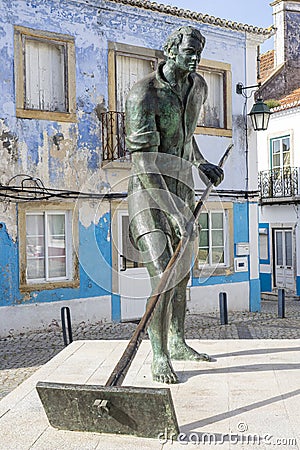Find results that contain all of your keywords. Content filter is on.
Search will return best illustrations, stock vectors and clipart.
Choose orientation:
Make it so!
You have chosen to exclude "" from your results.
Choose orientation:
Explore cartoons & images using related keywords:
salineiro
sculptor
simãµes
bronze
casting
1985
base
evoking difficult times work salt miner legend â sal revolta esperanã§aâ esperanã§a affixed letters beautiful visual metaphor shows worker pose stirring trays water tool pedestrian visible impression movement brooming implement rasoila squeegee originally wood lower edge lined zinc perceptive functional resemblanceStatue Of The Salt Miner Monument By The Sculptor Francisco Simões Set In Praça Da Republica In The Locality Of Alcochete Editorial Image
Designed by
Title
statue of the salt miner monument by the sculptor Francisco Simões set in Praça da Republica in the locality of alcochete #274873880
Description
The statue O Salineiro, by the sculptor Francisco Simões, is a bronze casting from 1985, on a stone base. Evoking difficult times in the work of the salt miner in the past, we can see the legend âDo Sal, a Revolta e a Esperançaâ (Do Sal, Revolta e a Esperança) affixed to the base, in bronze letters.Beautiful and significant visual metaphor that shows the worker, the salt miner, in a work pose, the pose of stirring the trays with water with the work tool.In this significant pedestrian statue of the salt miner, it is visible the impression of the movement of brooming the salt with the work implement, the rasoila or squeegee, originally in wood with the lower edge lined with zinc, the base of the sculptural image presenting a perceptive and functional resemblance to salt pans trays.We also note the most common clothing used by men in this activity: shorts and a shirt with rolled-up sleeves. The work pose represented here corresponds to the harvest of salt traditionally extracted with the rasoila or squeegee, carried out from the month of June, and which consists of sweeping or brooming the salt in various mounds where it remains to rest until it completes the drying process before from transport to storage and bagging, usually in September.The statuary monument to the Salineiro das Salinas do Samouco recalls centuries of history and culture of the Alcochetans dating back to the 13th century and the origins of the village of Samouco in 1241, with the first riverside settlements related to the exploitation of salt pans.This work of statuary in honor of Salineiro inscribes in the urban space the memory of a profession that is extinguished, functioning as an educational instrument of the history and local culture and a visual document of the saliferous activity.
This image is editorial

















